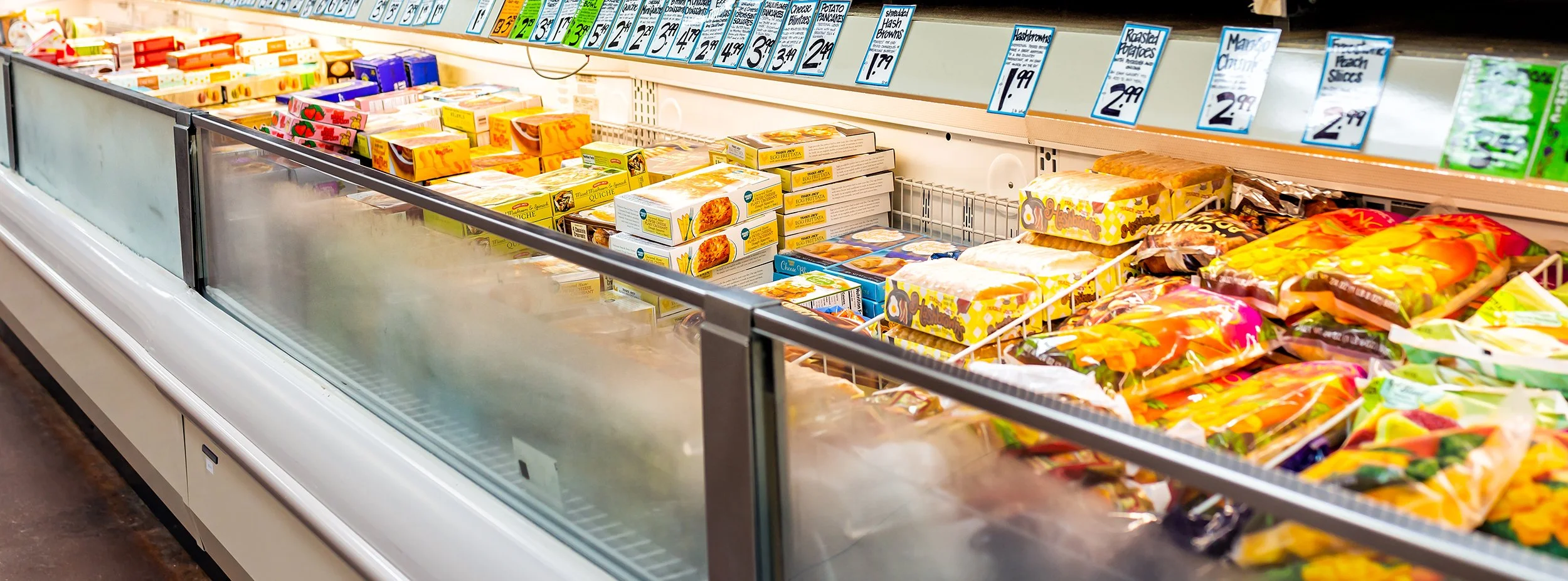Leaking Havoc: 50% of Northern California Supermarkets Surveyed Found Emitting Super Pollutant Greenhouse Gases
New Investigation: Climate-Polluting Leaks Detected at Safeway, Walmart, and Other Major CA Retailers
The Environmental Investigation Agency (EIA), Green America and YouthPower Climate Action released a new report, Leaking Havoc in Northern California, investigating leaks of hydrofluorocarbon (HFC) used in refrigeration at major supermarkets in the Bay Area and Sacramento. The organizations visited Safeway, Kroger-owned Ralphs Grocery or Foods Co., the Save Mart Companies (including Lucky), Smart & Final, Walmart and detected leaks at half (50%) of the sites. Previous Leaking Havoc investigations conducted by EIA of stores in the Washington, DC area and New York City found similar leak rates.
Avipsa Mahapatra, Climate Campaign Director at EIA US, said: “Our investigations prove that dangerous, avoidable climate pollutants continue to seep unchecked from supermarkets. California has taken leadership action by creating a program to track and regulate these refrigerant emissions. However, there’s an urgent need for further investment in robust enforcement to stop these leaking super pollutants from undermining our climate goals and public health.”
Key report findings:
HFC refrigerant leaks were detected in 50% of the 28 stores investigated.
Save Mart Companies (including Lucky) had leaks in 75% of stores visited.
Leaks were found in half of the Safeway, Smart & Final, and Walmart stores visited for each company.
Albertsons – parent company of Safeway – and Save Mart have both settled with the California Air Resources Board (CARB) numerous times between 2015 and 2024 for violations of the state’s Refrigerant Management Program (RMP), with penalties totaling nearly $7 million.
The California Air Resources Board (CARB) is the state agency for climate change programs and air pollution control efforts to achieve health-based air-quality standards. The agency’s Refrigerant Management Program (RMP) began in 2009 to reduce emissions from large refrigeration systems, like those used in supermarkets. Under the RMP, companies are required to conduct regular leak inspections for refrigerant leaks and if found, repair within two weeks of detection.
Beth Porter, Senior Climate Policy Analyst at EIA US, said: “For too long, too many companies have accepted wasteful refrigerant leaks as part of the cost of doing business, but the climate and communities have been bearing the full cost of these emissions. We need supermarkets to set zero-leak tolerance policies and prioritize transitioning to widely available natural refrigerants.”
HFCs are a group of man-made greenhouse gases considered to be a “super climate pollutant” because they have thousands of times more global warming potential (GWP) than carbon dioxide (CO2). The average supermarket leaks 25% of its refrigerant each year. Across the 42,000 stores nationwide, EIA estimates U.S. supermarkets release the greenhouse gas equivalent of burning 65 billion pounds of coal every single year.
Dan Howell, Green America Climate Campaigns Director, said: “The Leaking Havoc report shows the supermarket industry needs to take urgent action to protect communities from the devastating effects we are already seeing across the county from climate change. Hurricanes, wildfires, and floods are just a few of the examples of disasters tearing communities down. Stopping leaks of HFCs and switching to safer refrigerants is a big step major supermarkets must take to mitigate climate change.”
Bella Goldwasser, of YouthPower Climate Action, said: “Reducing refrigerant emissions has always been a really exciting solution to Youthpower, because of how high impact the change would be. HFCs’ staggering warming power, coupled with their shorter lifetime, mean they are an incredible way to reduce the heat trapped in our atmosphere quickly, which we need right now. More policymakers should have this important information, so we can establish more rigorous standards for detecting and preventing leaks. Collecting data about the harm related to leaks also helps to underscore the importance of transitioning to low-GWP natural refrigerants as soon as possible.”
In September, the EPA finalized a new rule under the American Innovation and Manufacturing (AIM) Act that includes requirements for repairing leaking refrigeration equipment and installing automatic leak detection systems. According to the agency, “[the] rule will provide additional cumulative greenhouse gas emissions reductions of approximately 120 million metric tons of carbon dioxide equivalent, an incremental net benefit of at least $6.9 billion.”
